Story of slave, Alamo hero recounted in new book
Image: In this sketch by artist Gary Zaboly, a wounded Joe is forced at the point of a bayonet to identify key members of the Alamo garrison after the final attack of March 6, 1836. (Image courtesy of Lee Spencer White)
(Houston Chronicle) Texans who remember their seventh-grade history know the name: Joe. They remember that Joe was a slave, that he was owned by Col. William Barret Travis. They may be aware that he was one of the few Texans who survived the Battle of the Alamo. Beyond that, there’s not much more that any of us, even the historians, have known about Joe. Until now.
In their fascinating new book, “Joe: The Slave Who Became an Alamo Legend,” Ron L. Jackson Jr. and Lee Spencer White fill in the biographical details of a man who deserves credit for assuring that Texans would always “Remember the Alamo.” At age 21, Joe was at Travis’ side during the siege, he watched him die early in the battle, and for the next four decades or so he continued to tell the Alamo story. Jackson and White also made the stunning discovery that Joe was the younger brother of the celebrated abolitionist William Wells Brown, who, with the 1853 publication of “Clotel; or The President’s Daughter,” became the first African-American novelist.
Fredericksburg resident White, a historian and preservationist, got interested in Joe in her duties as founder of the Alamo Defenders’ Descendants Association.
“He’s always been a mystery,” she said during a phone conversation this week. “I wanted to know whatever happened to that guy.” (more)
Digitized racial geography tour makes Austin’s racist history more accessible to the masses
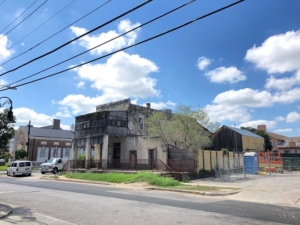 (The Daily Texan) Austin’s racial history will soon be accessible with a single click.
(The Daily Texan) Austin’s racial history will soon be accessible with a single click.
After almost a year of planning and preparations, a guided digitized version of Austin’s racial geography tour will launch Feb. 25. Led by Edmund Gordon, founding chair and associate professor of the African and African Diaspora Studies Department, digitizing the tour is an effort to increase accessibility and keep up with high demand. The online tour will feature new demographics and expand to include the history of Wheatville, now colloquially known as West Campus.
“(The tour is) looking to see how it is that race — and to a certain extent gendered ideas and notions — get built into our physical environment,” Gordon said.
He said the digital tour will have some advantages over the walking tour.
“Each tour stop will have a supplementary essay, bibliography, photograph or video associated with it,” Gordon said. “There’s much more information that’s going be offered than can be offered during the in-person tour.” (more)
These Photos of a Segregated U.S. Navy Unit Were Lost for Decades. They Still Have a Story to Tell
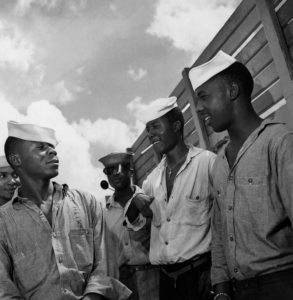
Sailors assigned to work as laborers at the US Naval Supply Depot on Guam. (Wayne Miller, Magnum Photos)
(Time) There are many ways to photograph a black person, and it’s easy for things to go horribly wrong. America’s long history of racist imagery makes that quite clear. Wayne Miller, a white man, was notable for doing it right. In the mid-20th century, a time when American visual culture was suffused with photographs that reinforced demeaning notions about black people, Miller created deeply empathetic images with a understated, yet unmistakable anti-racist intent. He made his best known photographs of African Americans on Chicago’s South Side, between 1946 and 1948. But they were not his first.
In 1944 and 1945, while serving as a U.S. Navy photographer, he created a photographic series about a segregated all-black unit that was assigned to the Naval Supply Depot on Guam. The men called their unit “Pot Luck,” and that was the name that Miller gave to the book that he planned to publish about them. The book never appeared; its maquette, or mock-up, was lost until 2018, when one of Miller’s daughters rediscovered it. And what she found, images from which are published here for the first time, reveals a gifted young photographer grappling with the complexities of race in American culture. (more)
Insurance Policies on Slaves: New York Life’s Complicated Past
In its 19th-century beginnings, New York Life Insurance sold 508 policies covering slaves. Their descendants are grappling with it.
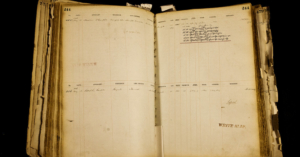
The bottom half of one of New York Life’s 19th-century ledgers lists an insurance policy taken out on a slave named Harriett. The ledger is held by the Schomburg Center for Research in Black Culture. (Photo: George Etheredge for The New York Times)
(New York Times) New York Life, the nation’s third-largest life insurance company, opened in Manhattan’s financial district in the spring of 1845. The firm possessed a prime address — 58 Wall Street — and a board of trustees populated by some of the city’s wealthiest merchants, bankers and railroad magnates.
Sales were sluggish that year. So the company looked south.
There, in Richmond, Va., an enterprising New York Life agent sold more than 30 policies in a single day in February 1846. Soon, advertisements began appearing in newspapers from Wilmington, N.C., to Louisville as the New York-based company encouraged Southerners to buy insurance to protect their most precious commodity: their slaves.
Alive, slaves were among a white man’s most prized assets. Dead, they were considered virtually worthless. Life insurance changed that calculus, allowing slave owners to recoup three-quarters of a slave’s value in the event of an untimely death. (more)
TIPHC Bookshelf
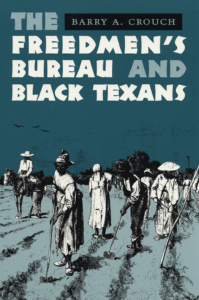 Published scholarship on black history in Texas is growing and we’d like to share with you some suggested readings, both current and past, from some of the preeminent history scholars in Texas and beyond. We invite you to take a look at our bookshelf page – including a featured selection – and check back as the list grows. A different selection will be featured each week. We welcome suggestions and reviews. This week, we offer, “The Freedmen’s Bureau and Black Texans,” by Barry A. Crouch.
Published scholarship on black history in Texas is growing and we’d like to share with you some suggested readings, both current and past, from some of the preeminent history scholars in Texas and beyond. We invite you to take a look at our bookshelf page – including a featured selection – and check back as the list grows. A different selection will be featured each week. We welcome suggestions and reviews. This week, we offer, “The Freedmen’s Bureau and Black Texans,” by Barry A. Crouch.
Drawing on a wealth of previously unused documentation in the National Archives, this book offers new insights into the workings of the Freedmen’s Bureau and the difficulties faced by Texas Bureau officials, who served in a remote and somewhat isolated area with little support from headquarters.
“Crouch skillfully presents the Freedmen’s Bureau as one of the most unique, misunderstood, and maligned ad hoc reform agencies ever devised by a democratic government in the name of social and political freedom and equality.”
East Texas Historical Journal
“. . . breaks new ground in Reconstruction history. [Crouch’s] study is among the first on the bureau in Texas and the first to focus on the subdistrict agent, the subassistant commissioner.”
Journal of Southern History
This Week in Texas Black History
Mar. 3
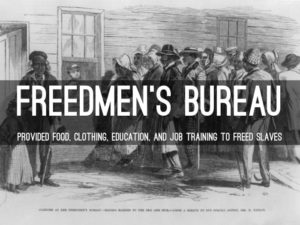 On this date in 1865, the Freedmen’s Bureau Bill was passed by the U.S. Congress. The Bureau of Refugees, Freedmen, and Abandoned Lands, better known as the Freedmen’s Bureau, was a branch of the U.S. Army created to provide practical aid to 4,000,000 newly freed Black Americans in their transition from slavery to freedom. The agency also helped whites left homeless by the Civil War. The Freedmen’s Bureau operated in Texas from late September 1865 until July 1870.
On this date in 1865, the Freedmen’s Bureau Bill was passed by the U.S. Congress. The Bureau of Refugees, Freedmen, and Abandoned Lands, better known as the Freedmen’s Bureau, was a branch of the U.S. Army created to provide practical aid to 4,000,000 newly freed Black Americans in their transition from slavery to freedom. The agency also helped whites left homeless by the Civil War. The Freedmen’s Bureau operated in Texas from late September 1865 until July 1870.
Mar. 4
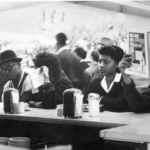 In 1960, on this day, students from Texas Southern University, led by Eldrewey Stearns, held Houston’s first sit-in protest at a Weingarten grocery store lunch counter. This protest introduced a new aspect in the struggle for equal rights in Houston and helped dismantle segregation in the city. By Aug. 25, 1960, supermarkets, drugstores and hotels had desegregated.
In 1960, on this day, students from Texas Southern University, led by Eldrewey Stearns, held Houston’s first sit-in protest at a Weingarten grocery store lunch counter. This protest introduced a new aspect in the struggle for equal rights in Houston and helped dismantle segregation in the city. By Aug. 25, 1960, supermarkets, drugstores and hotels had desegregated.
Mar. 6
 On this day in 1972, basketball star Shaquille O’Neal was born in Newark, New Jersey. His father was a U.S. Army sergeant and O’Neal spent part of his childhood in Germany, but began standing out on the basketball court at Cole Junior-Senior High School in San Antonio. In 1989, O’Neal led Cole to the 3A state championship and was named national high school Player of the Year. He played professionally for 19 seasons and won world championships with the Los Angeles Lakers and Miami Heat.
On this day in 1972, basketball star Shaquille O’Neal was born in Newark, New Jersey. His father was a U.S. Army sergeant and O’Neal spent part of his childhood in Germany, but began standing out on the basketball court at Cole Junior-Senior High School in San Antonio. In 1989, O’Neal led Cole to the 3A state championship and was named national high school Player of the Year. He played professionally for 19 seasons and won world championships with the Los Angeles Lakers and Miami Heat.
Mar. 6
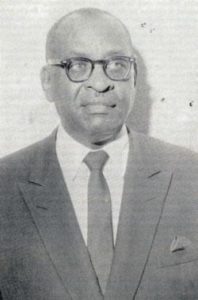 Civil Rights activist Dr. Lonnie Smith died on this day in 1971. A native of Yoakum, Smith started a dental practice in Galveston in 1925 after graduating from Meharry Medical College in Nashville. He attempted to vote in the 1940 Democratic Primary but was denied a ballot at his Houston precinct because voting in was open only to whites. With help from the NAACP, Smith filed a suit that reached the U.S. Supreme Court which ruled in his favor. The ruling opened primary voting to all eligible Texans.
Civil Rights activist Dr. Lonnie Smith died on this day in 1971. A native of Yoakum, Smith started a dental practice in Galveston in 1925 after graduating from Meharry Medical College in Nashville. He attempted to vote in the 1940 Democratic Primary but was denied a ballot at his Houston precinct because voting in was open only to whites. With help from the NAACP, Smith filed a suit that reached the U.S. Supreme Court which ruled in his favor. The ruling opened primary voting to all eligible Texans.
Mar. 7
 On this day in 1942, the first cadets graduated from flying school at Tuskegee, Alabama. In June 1943, the first squadron of black aviators, the 99th Pursuit Squadron, flew its first combat mission, strafing enemy positions on the Italian Island of Pantelleria. Overall, there were 32 Texans who graduated from the school between 1942 and 1946 and flew as Tuskegee pilots, and many others from Texas who served in support groups – mechanics, administration, etc.
On this day in 1942, the first cadets graduated from flying school at Tuskegee, Alabama. In June 1943, the first squadron of black aviators, the 99th Pursuit Squadron, flew its first combat mission, strafing enemy positions on the Italian Island of Pantelleria. Overall, there were 32 Texans who graduated from the school between 1942 and 1946 and flew as Tuskegee pilots, and many others from Texas who served in support groups – mechanics, administration, etc.
Mar. 9
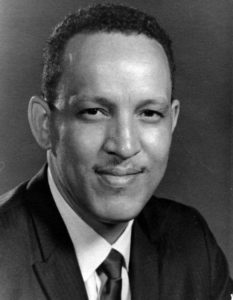 Legendary Motown producer, composer, and musical director Gil Askey was born in Austin on this day in 1925. Askey attended the original Anderson High School and played trumpet in the marching band. At Motown, Askey was musical director for Diana Ross and worked with other artists, including Stevie Wonder, the Jackson Five, Marvin Gaye, and the Four Tops. Askey was nominated for an Academy Award for his work on the 1972 film “Lady Sings The Blues” based on the life of Billie Holliday.
Legendary Motown producer, composer, and musical director Gil Askey was born in Austin on this day in 1925. Askey attended the original Anderson High School and played trumpet in the marching band. At Motown, Askey was musical director for Diana Ross and worked with other artists, including Stevie Wonder, the Jackson Five, Marvin Gaye, and the Four Tops. Askey was nominated for an Academy Award for his work on the 1972 film “Lady Sings The Blues” based on the life of Billie Holliday.
Mar. 9
 On this day in 1930, innovative jazz saxophonist Ornette Coleman was born in Fort Worth. His album “Sound Grammar” received the 2007 Pulitzer Prize for music. By age 14, Coleman had taught himself to play the instrument and read music. In 2007, he also received a Grammy Award for lifetime achievement. In 2009, Coleman received the Miles Davis Award from the Festival International de Jazz de Montréal for his contributions to the evolution jazz.
On this day in 1930, innovative jazz saxophonist Ornette Coleman was born in Fort Worth. His album “Sound Grammar” received the 2007 Pulitzer Prize for music. By age 14, Coleman had taught himself to play the instrument and read music. In 2007, he also received a Grammy Award for lifetime achievement. In 2009, Coleman received the Miles Davis Award from the Festival International de Jazz de Montréal for his contributions to the evolution jazz.
Blog: Ron Goodwin, Ph.D., author, PVAMU history professor
Ron Goodwin is an assistant professor of history at Prairie View A&M University. Even though he was a military “brat,” he still considers San Antonio home. Like his father and brother, Ron joined the U.S. Air Force and while enlisted received his undergraduate degree from Texas Lutheran University in Seguin, Texas. After his honorable discharge, he completed graduate degrees from Texas Southern University. Goodwin’s book, Blacks in Houston, is a pictorial history of Houston’s black community. His most recent book, Remembering the Days of Sorrow, examines the institution of slavery in Texas from the perspective of the New Deal’s Slave Narratives.
Recent Posts
The Everlasting Light
Ye are the light of the world. A city that is set on an hill cannot be hid. Neither do men light a candle, and put it under a bushel, but on a candlestick; and it giveth light unto all that are in the house. Let your light so shine before men, that they may see your good works, and glorify your Father which is in heaven. — Matthew 5: 14-16
This is the month set aside to honor…(more)
The Return of the Silent Majority
Fifty years ago, in January 1969, Richard Nixon was sworn in as the thirty-seventh president of the United States. His legacy as President was marred by the Watergate investigations and his eventual resignation from office which overshadowed the way in which he won the office. His central campaign rhetoric was designed to garner support from white Southerners (otherwise known in history as the “Silent Majority”) whose racial beliefs leaned heavily towards the support of white…(more)
Submissions wanted
Historians, scholars, students, lend us your…writings. Help us produce the most comprehensive documentation ever undertaken for the African American experience in Texas. We encourage you to contribute items about people, places, events, issues, politics/legislation, sports, entertainment, religion, etc., as general entries or essays. Our documentation is wide-ranging and diverse, and you may research and write about the subject of your interest or, to start, please consult our list of suggested biographical entries and see submission guidelines. However, all topics must be approved by TIPHC editors before beginning your research/writing.
We welcome your questions or comments. Please contact Michael Hurd, Director of TIPHC, at mdhurd@pvamu.edu.
